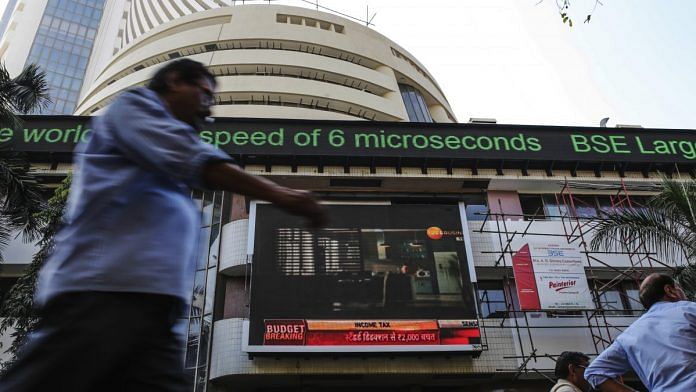India is struggling to keep international investors interested. An uncharacteristically bold concession from the central bank shows the extent of desperation.
The 10-year U.S. bond yield breaking through the 3 percent danger level worries India, as it does every emerging market. Still, the price that sends policy makers in New Delhi and Mumbai into paroxysm isn’t that of global capital, but of a commodity: oil.
With Brent crude flirting with $75 a barrel, the panic is already beginning to show. Crucial state polls in Karnataka are due next week and general elections are only a year away. No surprise then that the Indian government appears to have instructed state-run oil marketers who control most retail sales not to raise pump prices.
The price caps, as Bloomberg Intelligence analysts note, will have either of two effects: Year-end dividends from oil companies to the taxpayers will be hit as their earnings collapse; or, if the government chooses to cut $44 billion in excise duties to spare consumers the burden of costlier crude, its revenue will take a more direct blow.
India’s bond market is already jittery about fiscal slippage. To that, add the inflationary impact of costlier gasoline and diesel. (Suppressing pump prices for a while merely postpones the inflation spike.) Reserve Bank of India Deputy Governor Viral Acharya’s comment at the last monetary policy meeting that his next vote could be for raising interest rates hasn’t gone down well with the market.
India, which isn’t on any major global bond index, is struggling to keep international investors interested. An uncharacteristically bold concession from the central bank shows the extent of desperation. Overseas money managers are being allowed to buy government securities of any maturity, including short-term treasury bills; previously they could only buy paper that had at least three years left to run.
By getting over its distaste for hot money, the RBI is tacitly acknowledging what asset managers already know: Foreigners are unlikely to make a beeline for long-dated Indian bonds, which could be most at risk from inflation. Ditto for domestic investors. Indian banks are drowning in large stockpiles of government securities. The lenders accumulated the bonds to deploy cash that came in their doors after the shock November 2016 demonetization. But now yields are hardening, and banks’ treasury departments are being forced to stomach mark-to-market losses.
As their regulator, the RBI has thrown banks the carrot of spreading their losses over a year. But ultimately all bondholders – domestic or overseas – have to keep an eye on the oil price. Costlier imported energy means a wider current-account deficit; a weaker rupee; higher inflation and interest rates; and a brake on the recent revival in growth.
Prime Minister Narendra Modi has been lucky: His 2014 poll victory coincided with the start of a multiyear collapse in global crude prices. Over four years, people forgot that oil is the biggest bond vigilante in India. Now that it’s getting ready to attack, the RBI is right to worry. There are sellers aplenty of the government’s IOUs, but no willing buyers.
-Bloomberg view






